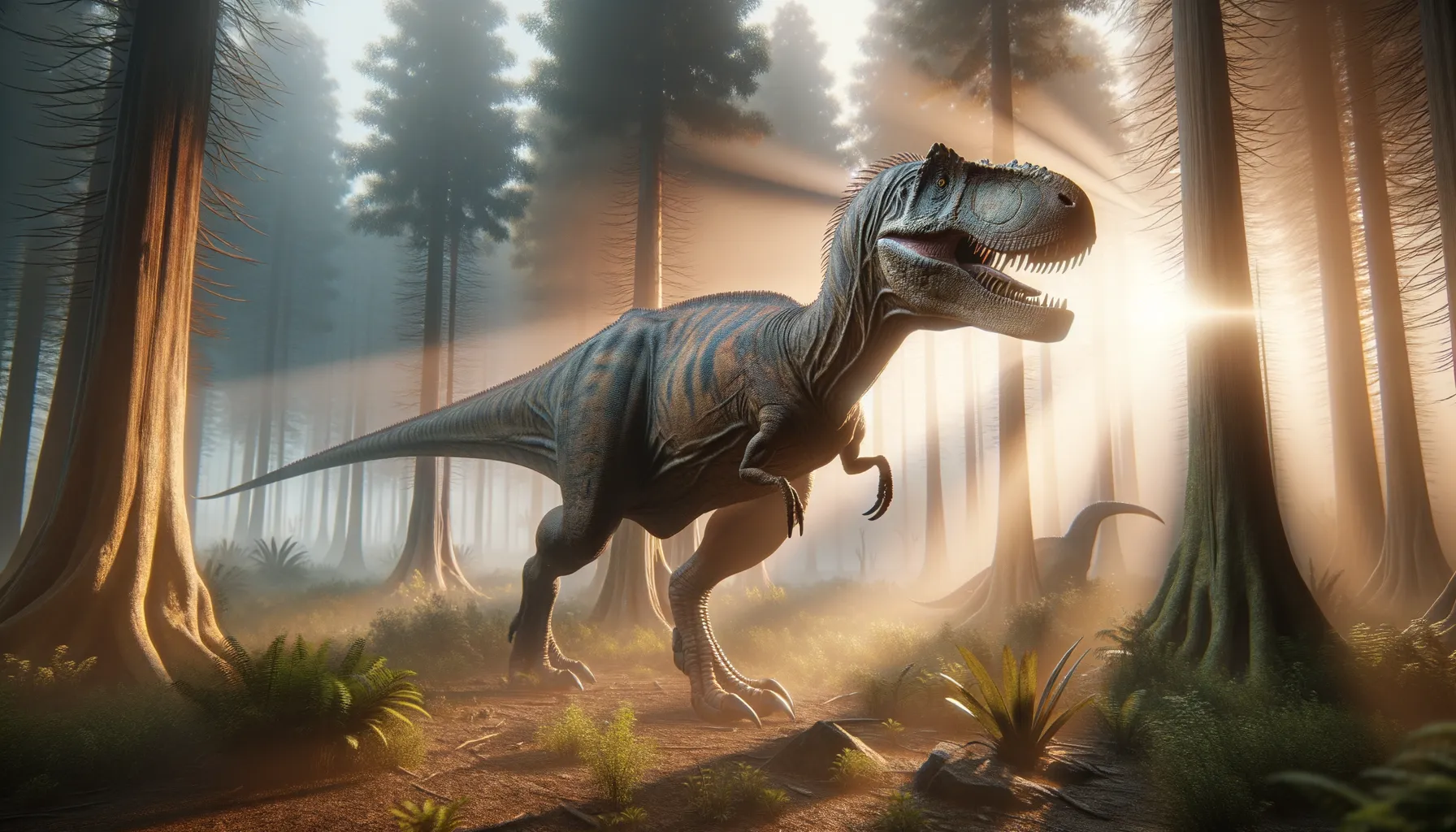
Gualicho
The swift predator of prehistoric Patagonia!
Period
Cretaceous
Length
Around 6 meters long from head to tail.
Height
Stood about 1.7 meters tall at the hip.
Weight
Approximately 450 kilograms (about 1,000 pounds).
Gualicho was a medium-sized theropod dinosaur known for its unique hand structure with two functional fingers. It lived during the Late Cretaceous period and roamed what is now South America. Gualicho's distinct characteristics make it an intriguing subject for studying dinosaur evolution and diversification. Its fossils suggest it was a bipedal predator with a relatively lightweight build, which would have facilitated quick movements whether hunting or avoiding larger predators.
Diet
Gualicho was a carnivore, preying on smaller dinosaurs and other animals. It likely relied on its speed and agility to catch prey, while its sharp teeth helped it to tear meat.
Hunting
Gualicho likely hunted alone, stalking prey under the cover of dense vegetative zones. As a nimble predator, it might have used ambush tactics to surprise its prey before launching a quick attack.
Environmental challenges
Living in the Late Cretaceous, Gualicho faced challenges like fluctuating climates and the presence of larger predators. It needed to adapt to a dynamic environment with changing vegetation and water sources. Additionally, competition for food resources was high, requiring Gualicho to be cunning and opportunistic in its hunting strategies.
Speed
Moderately fast, it could run to escape predators.
Lifespan
Estimated at around 20 to 30 years.
First discovery
Discovered in Patagonia, Argentina in 2007.
Fun Facts
- Gualicho was a dinosaur that lived around 90 million years ago during the Late Cretaceous period.
- It was discovered in what is now Argentina by scientists in 2007.
- Gualicho is part of a group of meat-eating dinosaurs known as theropods, which includes famous species like Tyrannosaurus rex.
- Despite being a theropod, Gualicho had unusually small arms, even smaller proportionally than those of T. rex.
- Its name, Gualicho, comes from a spirit or deity in the mythology of the indigenous people of Patagonia.
- Gualicho's discovery has helped scientists understand more about the diversity of theropod dinosaurs in South America.
- The dinosaur is estimated to have been about 6 meters (20 feet) long, making it a medium-sized predator for its time.
Growth and Development
Gualicho would have hatched from eggs and grown relatively quickly to reach its adult size, an advantage in a predatory environment. Juveniles might have stayed close to adults early on for protection. Its skeletal structure suggests rapid growth rates typical of theropods, helping it to survive in its predator-rich habitat.
Habitat
The region Gualicho inhabited was likely a mix of forests and open fields with sufficient cover for stalking prey. This terrain provided ample hiding spots, beneficial for hunting and evading larger predators. Water sources would have been crucial, influencing migration patterns and population distributions.
Interaction with other species
Gualicho coexisted with other dinosaur species, likely competing with both herbivores and carnivores. Territorial disputes could have occurred with peers or other predators. Its interactions may have also included scavenging opportunities on kills made by larger predators.
Natural lifespan
Its natural lifespan was likely influenced by predation and environmental factors, typically around 20-30 years.
Reproduction
Gualicho likely laid eggs in nests, with parents possibly guarding the nest from predators. Juveniles would have been vulnerable, with high mortality rates expected in young ages. Parental care, if any, was likely limited to egg protection.
Social behaviour
Gualicho could have exhibited primarily solitary behavior, focusing on individual survival and territory. While hunting may have been solitary, there might have been interactions in mating season which required social displays.
Fossil locations
Fossils of Gualicho have been primarily discovered in the Patagonian region of Argentina. These fossil sites provide critical insights into the Cretaceous ecosystem of South America. Further discoveries are rare, hinting at a possibly limited distribution or preservation bias in fossil records.
